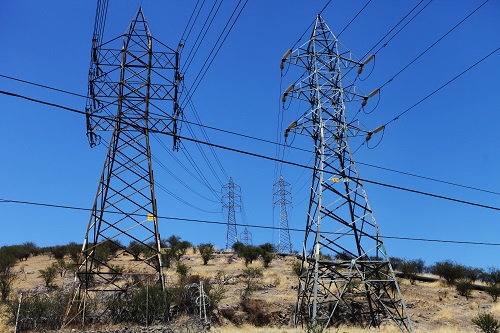
Experts agree that this would be a seasonal phenomenon and point out that the entry of new renewable projects would lower the indicator in 2019.
Marginal cost of electricity rises for first time in six years due to fuel price hikes and drought
(El Mercurio) A period of six years with a downward trend was broken this year in the measurement of the marginal costs of electricity production of the National Electric System.
This is reflected in figures from the National Electric Coordinator, which explains that during 2018 the indicator stood at an annual average of US$ 63.51 per Megawatt hour (MWh) measured at the Quillota busbar, a sum that represents an increase of 11% approx. compared to the previous year, which closed at US$ 57.42 per MWh (the second lowest after 2006).
According to the Coordinator, this variation is due to multiple factors, among them the country’s hydrological situation, which did not allow a greater dispatch of run-of-river sources, in addition to demand and, to a greater extent, the increase in fuel prices.
In fact, in the annual average, coal and natural gas, which have a great preponderance in the energy matrix, saw their value increase by 18% and 31%, respectively. These were joined by diesel, with a lower share, which rose 47% (see infographic).
However, this increase was mitigated by the contribution made by the integration of more renewable sources, which to date are close to full placement. Thus, the production of this type of sources grew from 15% in 2017 to 17.4% in 2018, with about 13,300 GWh per year.
“To the extent that hydrological conditions are not so favorable, marginal costs are temporarily affected over time, and despite the fact that there is a long-term downward projection, when there is a lack of water, costs go up, as has happened this year. This has been a trend we have had for the last six years”, explains Hugh Rudnick, director of Systep and academic at the Catholic University.
However, the effects of this increase could only be seen in the market of free customers, since regulated customers are subscribed to the prices established in the tenders.
Positive outlook
Despite the increase in marginal costs seen this year, projections indicate that this will only be an exception, as a decline should resume in 2019.
“I don’t see this as a warning sign. I think it is a passing phenomenon, a response to the increase in fuel costs, which actually increased much more than 10%. Furthermore, the outlook for next year is for oil to be around US$ 75, which is quite good,” says Sebastián Novoa, executive director of Ecom Energía Chile.
In fact, the expert projects that the indicator in 2019 will be in the middle of the values seen in the last two years, which is supported by the fact that rainfall has improved and reservoirs are fuller.
“We are going to start the year in pretty good conditions. Similar, or even better than last year at this time, and fuel costs should go down. In addition, interconnection should tend to equalize the situation, so we should not see anything very different from what has happened in the last two years”, Novoa concludes.
In the long term, it is expected that there will be generating companies with lower production costs, so there will be greater competition from consumers to access these prices. “As marginal costs go down, obviously contracts should also go down. That is already happening and the market is becoming very competitive, generators are looking to lift and move regulated clients to free in order to offer better prices and take part of the cake,” concludes Rudnick.





